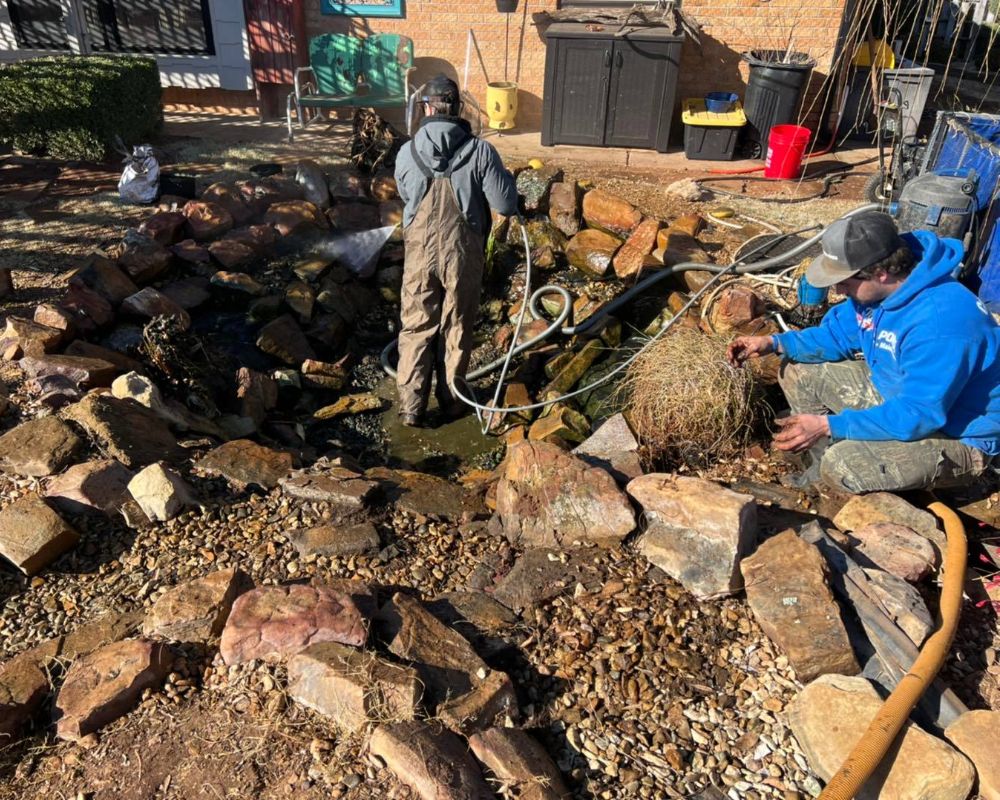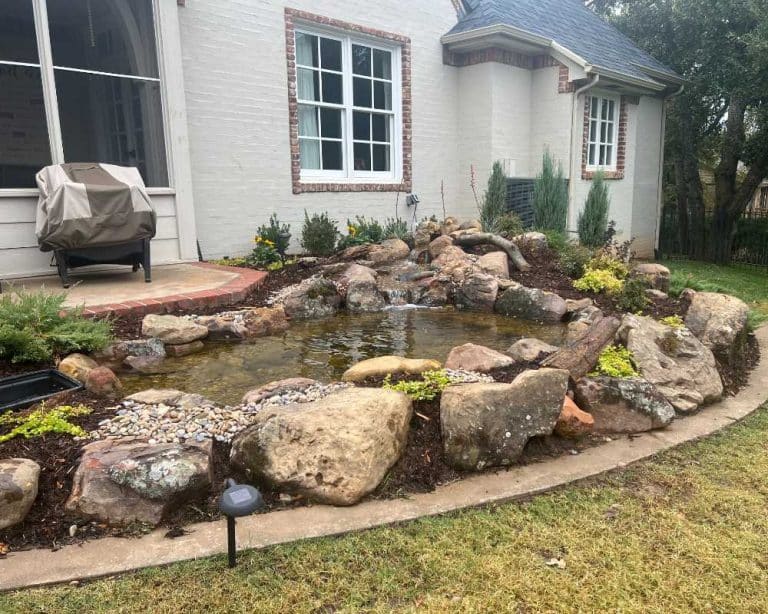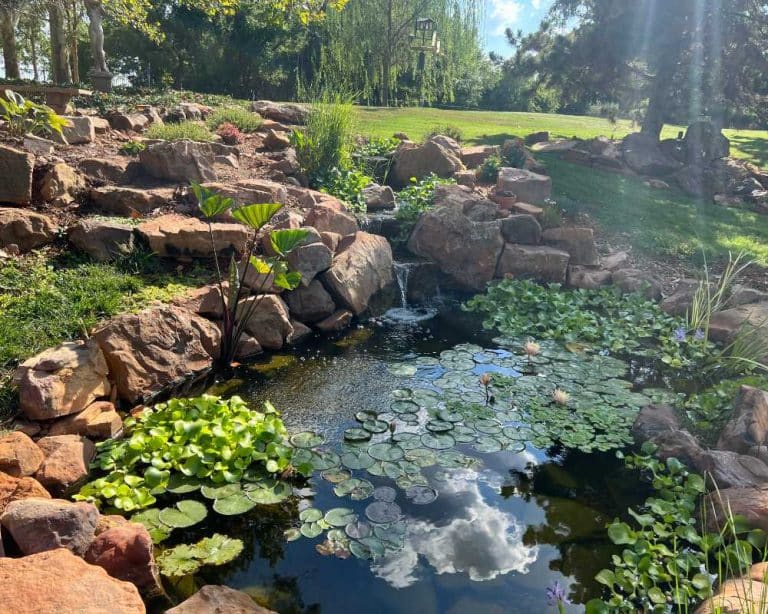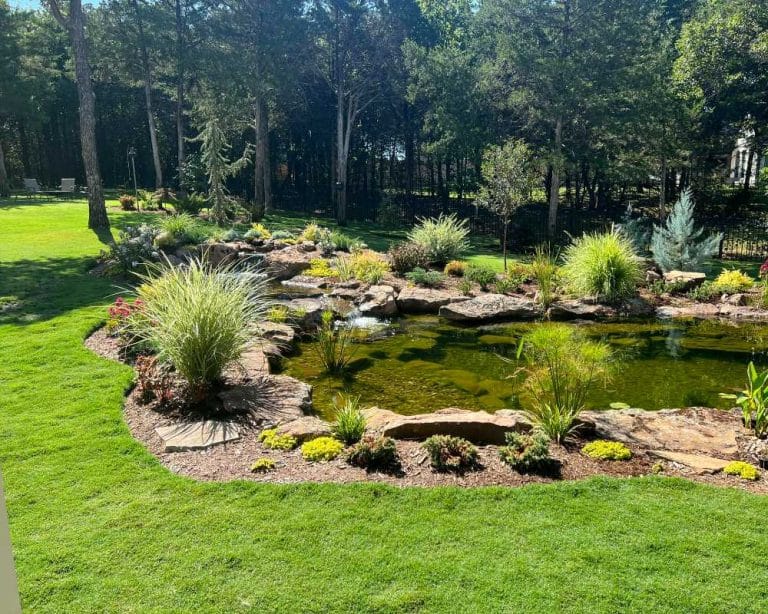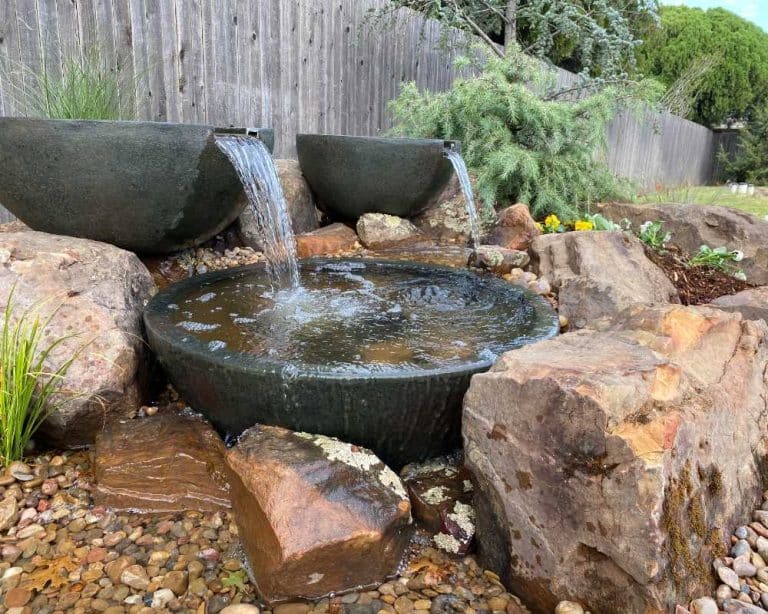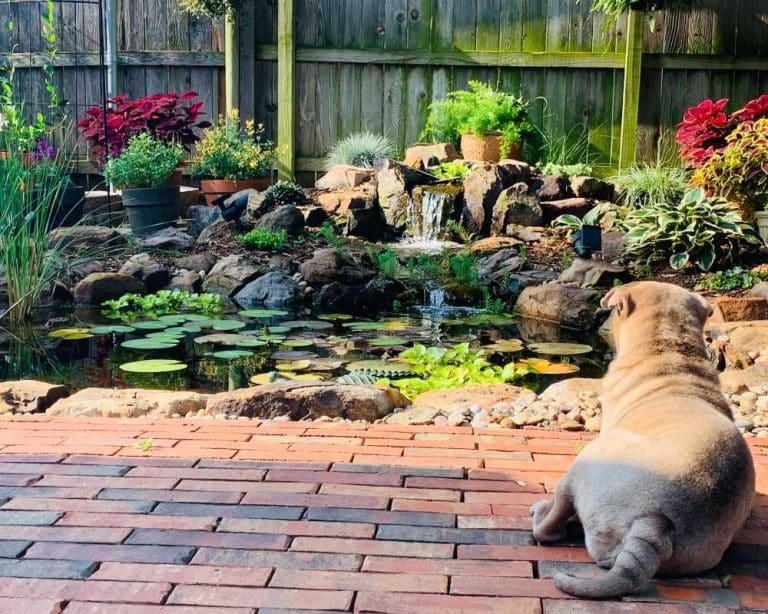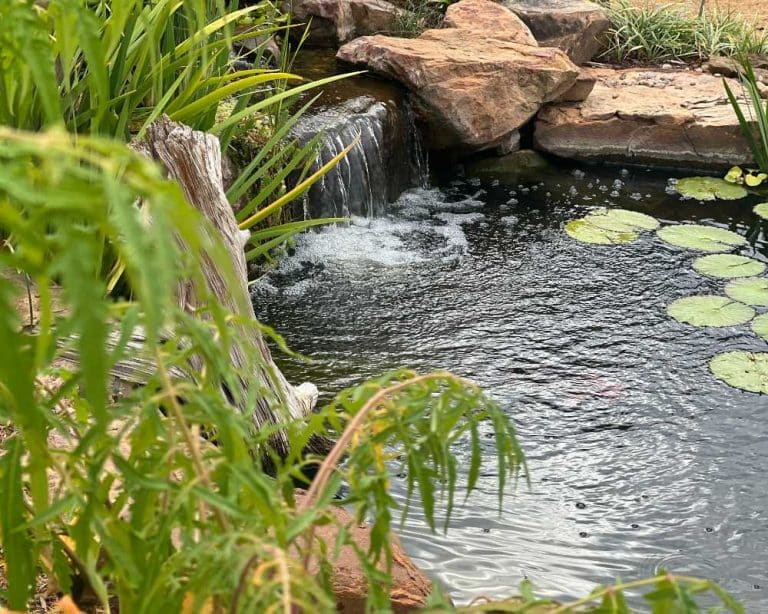How to Drain a Pond (With or without a Pump)
If you own a pond, you have likely invested time in understanding the proper procedures for maintaining it and worked hard to do so. Nonetheless, we often get sidetracked by life, and there may come a time when the pond is simply beyond cleaning. If this happens, don’t worry. You may have a little work ahead of you, but your mission will be clear. Once you drain your pond, you can clean it much easier.
Signs to Drain the Pond
A Damaged Pond Liner
Roots, burrowing animals, or other intrusions can cause a plastic pond liner to rupture, resulting in a leak. Leaks can cause unwanted outside pollution, or worse – the water can drain completely out of your pond. If this happens, you will have some contractor work to do to replace the liner, and step one will be draining the pond. (If your basin is concrete, or for some other reason doesn’t require a liner, then you likely won’t have to worry about this situation.)
Algae Blooms
If the algae in your pond is blooming out of control, and it has overwhelmed your filter’s capacity to cleanse the water, then it may be time to drain your pond. At first algae will turn the water a tint of green. Then it will become a green murky cloud. Then the algae will thicken. At a certain point, cleaning your pond water becomes impractical, as does partial water replacement. If this happens, it is time to drain your pond.
Sludge and Tannins
Decaying organic material produces tannins that turn your water brown and contribute to a layer of muck at the bottom of your pond. This muck can eventually build up and coat all of the pond’s underwater features, making it difficult for people to see anything inside. Water replacement will help the tannin problem a bit, and pond vacuums are made to clean sludge – to a certain point. However, if these issues are left unattended for long enough, draining your pond will be the most expedient solution.
Fish and Wildlife
Perhaps, in your case, you can address the cleaning of rocks, silt, sludge, and algae using conventional methods. However, the wildlife in your pond may not be able to handle the temporary upheaval in their ecosystem. If this is the case, you will need to take them out of the pond temporarily while you clean it.
This precaution is challenging and poses some risk to your pets. So if you find it necessary, you might as well take the opportunity to perform a deep cleaning by draining your pond. After a deep clean, your pond will be easier to maintain, and thus you should be able to wait awhile before having to inconvenience your wildlife again.
Professional Koi Pond Installation in Oklahoma
Getting a professionally installed Koi pond in your home is only a short phone call away. At Oklahoma Ponds, we have over 30 years of koi pond installation expertise in the great state of Oklahoma. We are Oklahoma City’s fastest growing pond contractor, and that is not by accident. We strive to be the leader in all things garden ponds and water features. Every service we offer comes with a 100% satisfaction guarantee. Why choose us?
Specialized Company
We specialize in the care and construction of garden koi ponds. This allows us to stay up to date with the latest technology and advances in our industry
Dependable Services
Each of our technicians are thoroughly trained in the care and construction of garden ponds and water features. All of our services come with a 100% satisfaction guarantee!
Reputable Company
Every service comes with our 100% satisfaction guarantee. Our company’s reputation is impeccable, just take a look at our Google Reviews.
How do I Drain my Pond with a Pump?
The principle is simple. You place the pump near (or in) the pond, locate the intake valve (or take-up hose) at the lowest point of the pond, and the mouth of the outflow hose next to whatever drain opening you want the water to flow into. You may have to do a little research on the laws of your municipality to determine whether the water you are draining is harmful to drainage systems or waterways; in such case, you might need to use the sewer. Once the pump is located, you plug it into the appropriate outlet and turn it on.
There are many different types of pump available for draining a pond. Which one is best for you will depend on the size of your pond, the quality of the water, the depth of your pond and distance to the drain, and your budget. And you must account for these factors when shopping for one. But in this section, we briefly describe a few kinds of pumps to get the ball rolling.
Submersible Pumps
Submersible Pumps are placed at the lowest point of your pond, and thus they rely on gravity to take in water all the way through the process. The pump then pushes the water out. As with any pump, the deeper your pond is, the harder it must work to push the water out to the height of the point at which it begins to flow downhill. So make sure you select one powerful enough to drain your entire pond.
Solar-Powered Pumps
This option can save you money on electricity. With some exceptions, they tend to offer less draining power, and thus are better suited for smaller ponds. They work best during bright daylight hours. But the cost savings makes them appealing, and they are portable: You can position them at any point near your pond, or use them anywhere.
Hand Pumps
Again, this option works best with smaller ponds. Given their mechanical simplicity, they are reliable and durable. As with solar pumps, you won’t have to worry about being near an electrical outlet. Unlike with solar pumps, you can use them in any weather, or during day or night.
How To Drain A Pond Without A Pump
Unless you want to form a bucket brigade, your best bet for emptying your pond without a pump is to syphon the water to a hillside or open drain. Get a hose (without any leaks), place one end at the lowest point in the pond’s basin, and the other end at a point lower in elevation than that. Apply just enough suction at the lower end to get the water from one end to the other, and the force of gravity acting on the pond’s surface will do the rest, pushing the water into the hose at the bottom of the pond, and through it to your pre-determined exit point. All you have to do is wait for the water to drain.
Refilling your Pond
When you refill your pond, make sure you treat the water with a water softener appropriate for the place you live. The softener will neutralize the effects of heavy metals and other toxins like chlorine or ammonia on your pond’s ecosystem. You may also wish to add beneficial bacteria to aid in the breakdown of organic matter and keep your water clean. Activated carbon can also help with filtration. After treating your water, re-introduce your wildlife, making sure to carefully match the water temperature of the holding tank(s) to the temperature of your pond.
Oklahoma Ponds – Your Pond Cleaning Experts
If you are wondering whether you might need to drain your pond, or if you need help or equipment to do so, give us a call. Our experts have been helping Oklahomans maintain their pond’s vitality for years, and we have everything you need right here in our store. If your pond has unique features that make it a special challenge to clean or drain, or if you’ve let it go too long, never fear. Come by our store, and talk to our pond maintenance experts. We will help you restore it to its natural beauty in no time.

